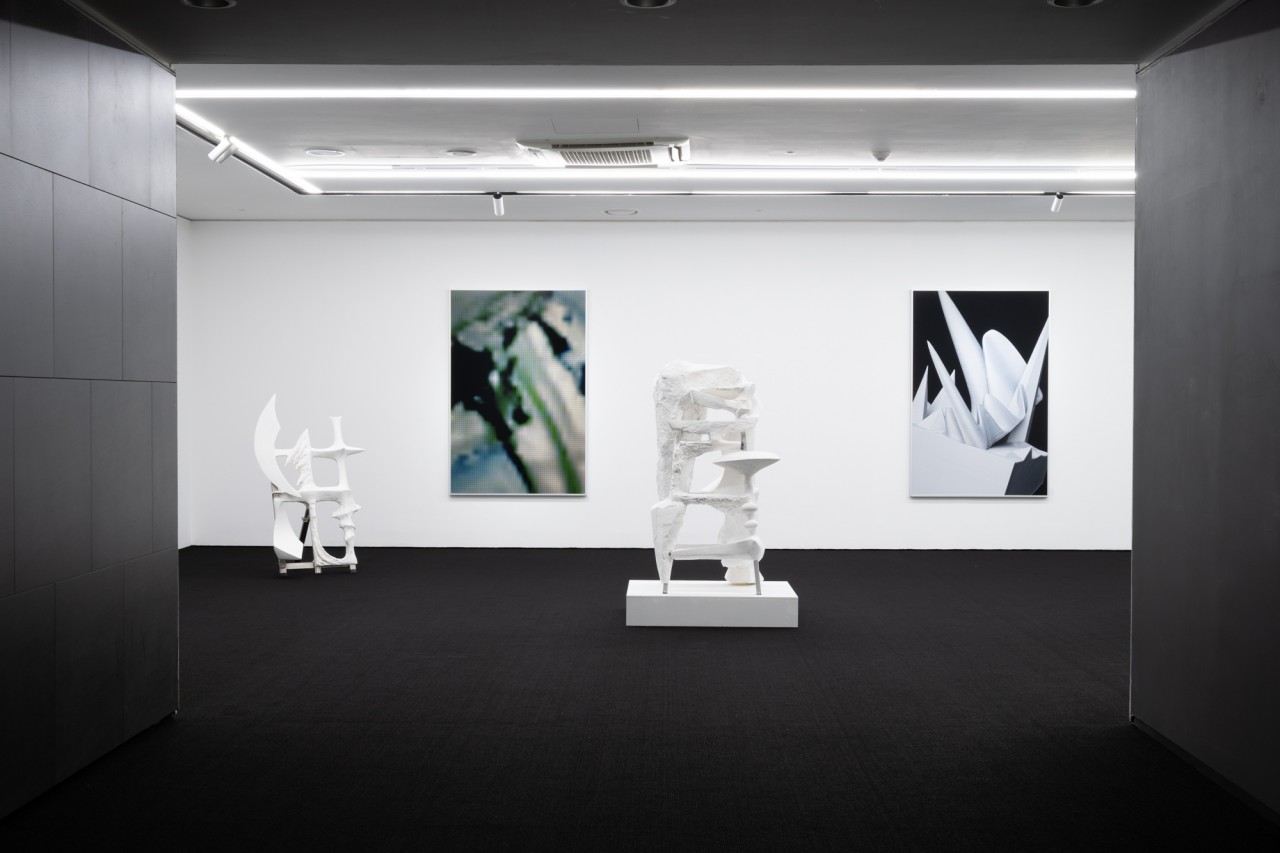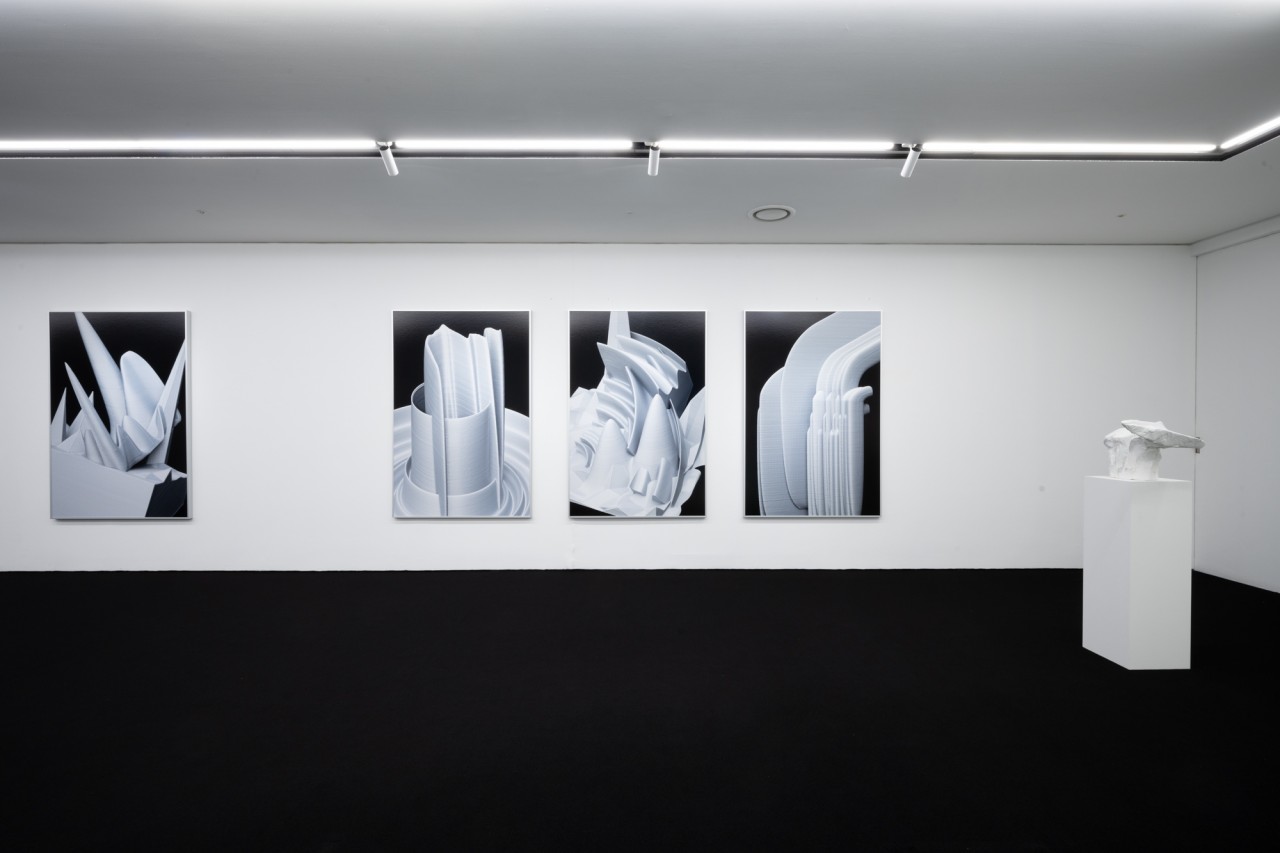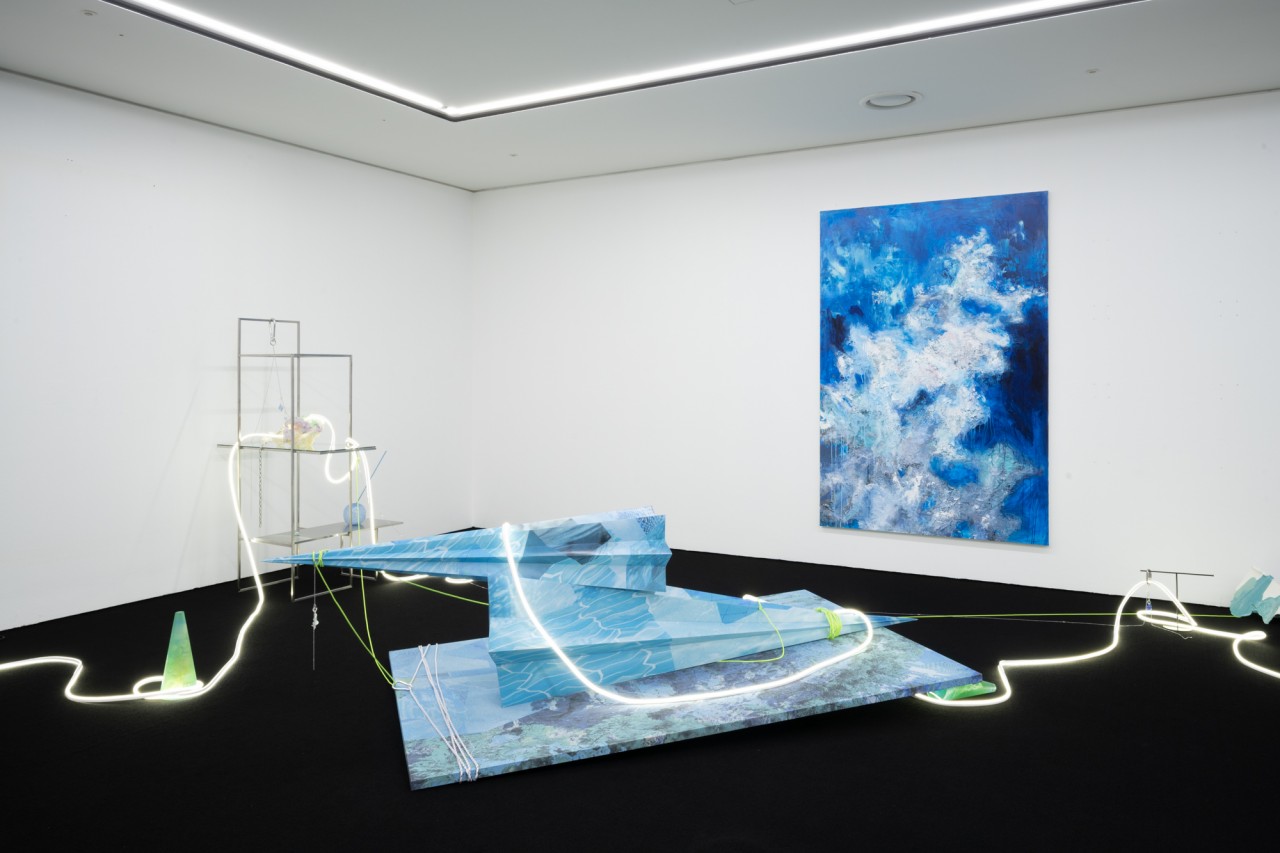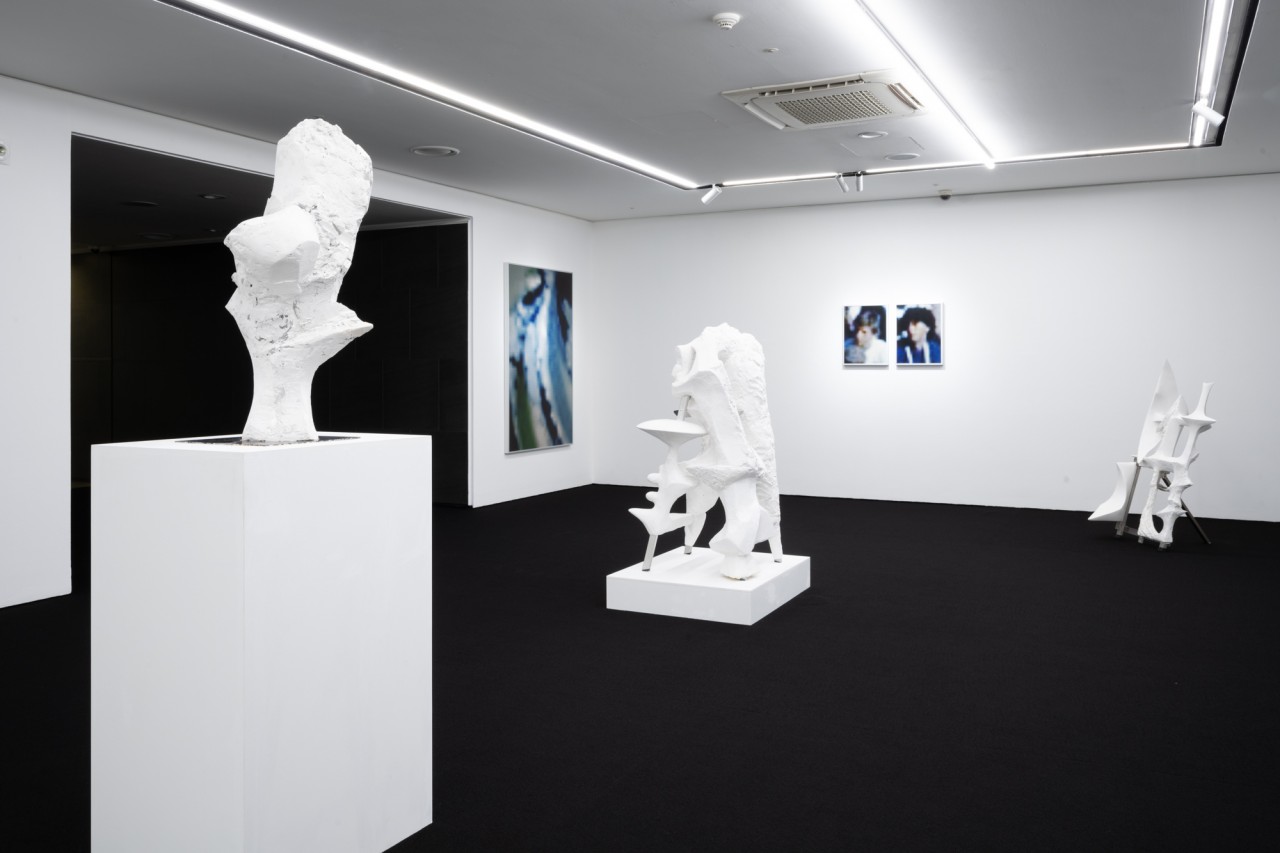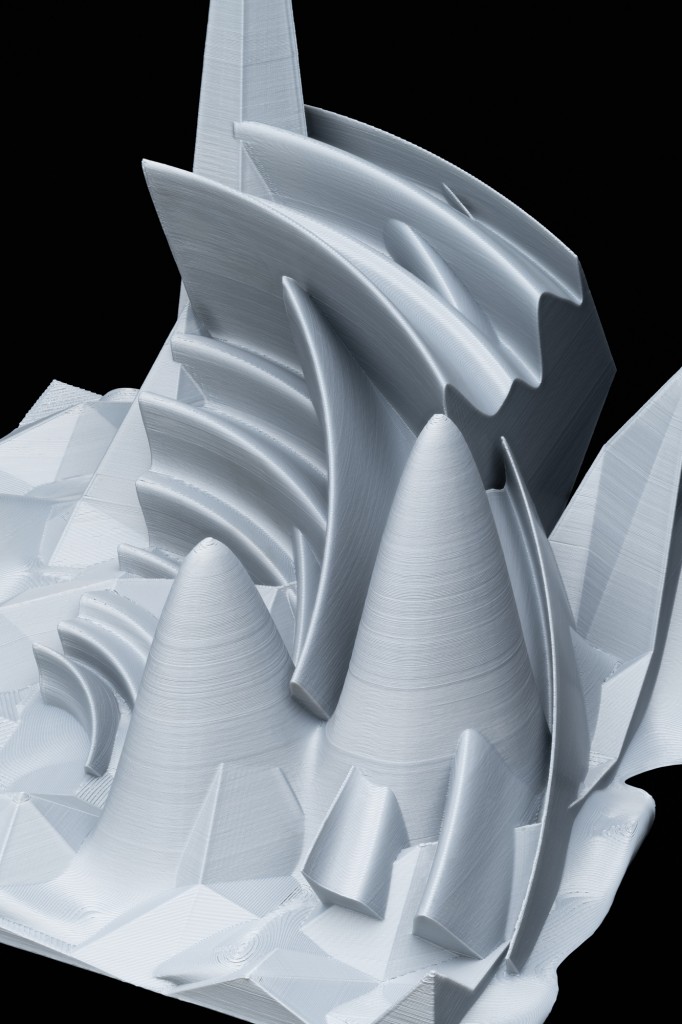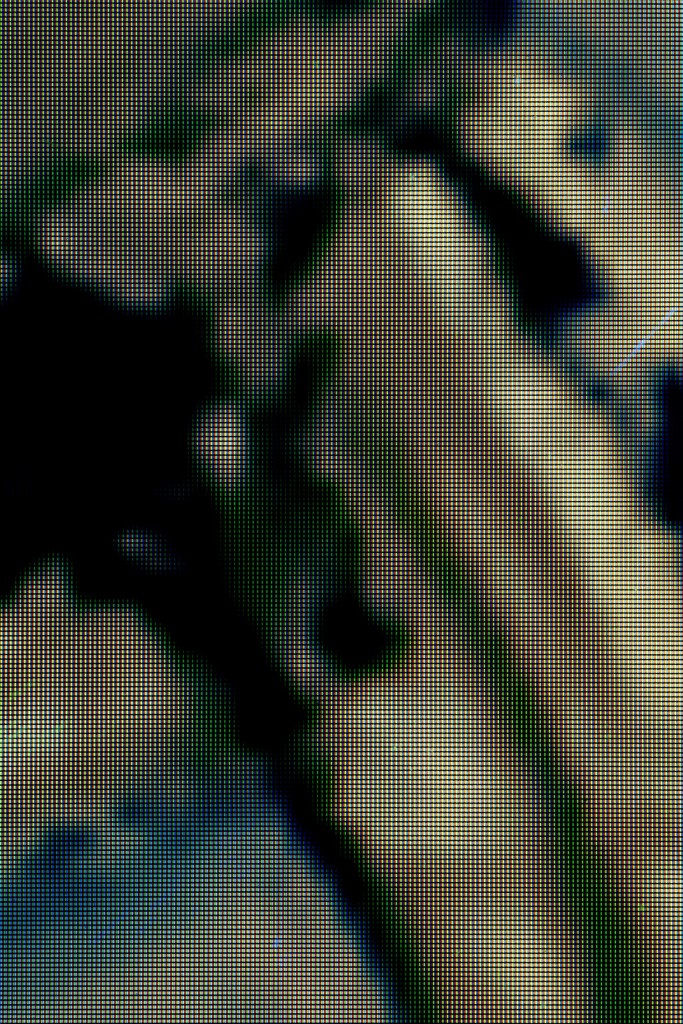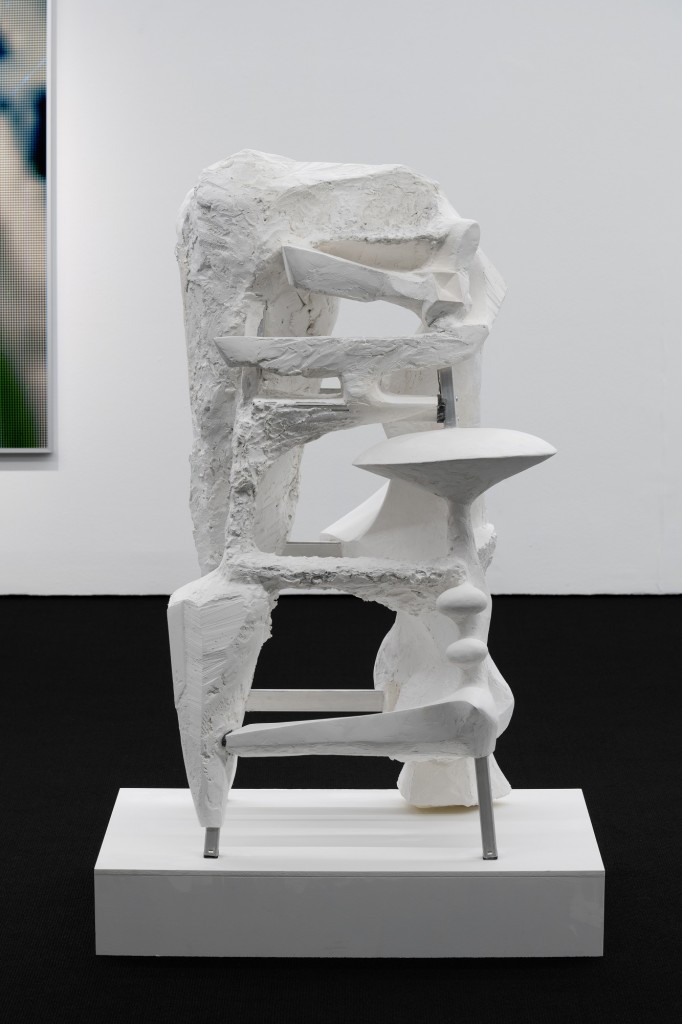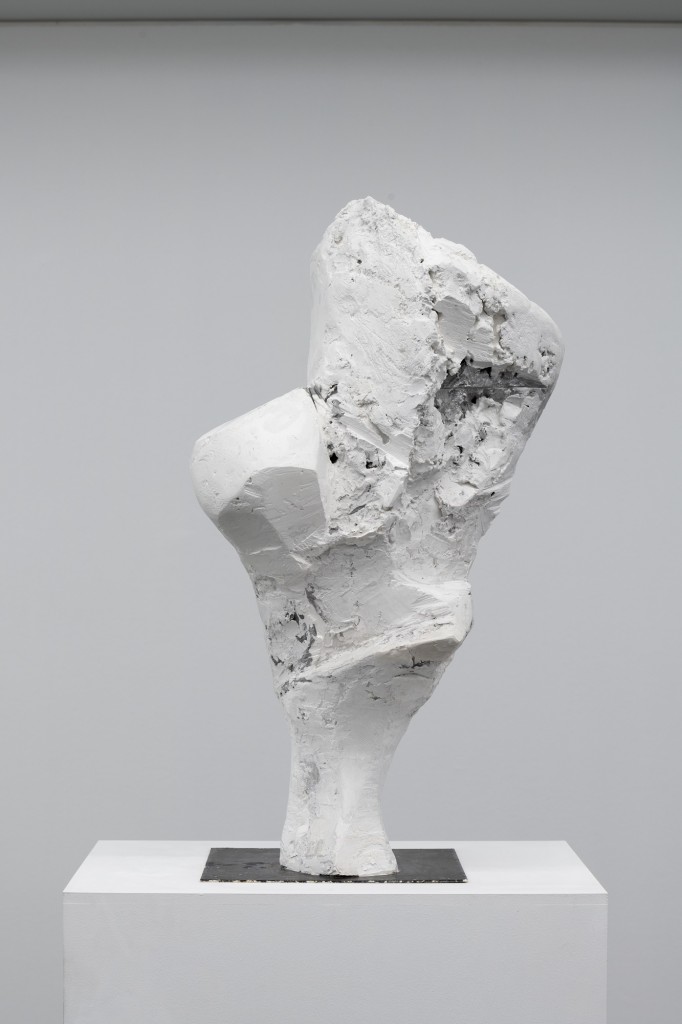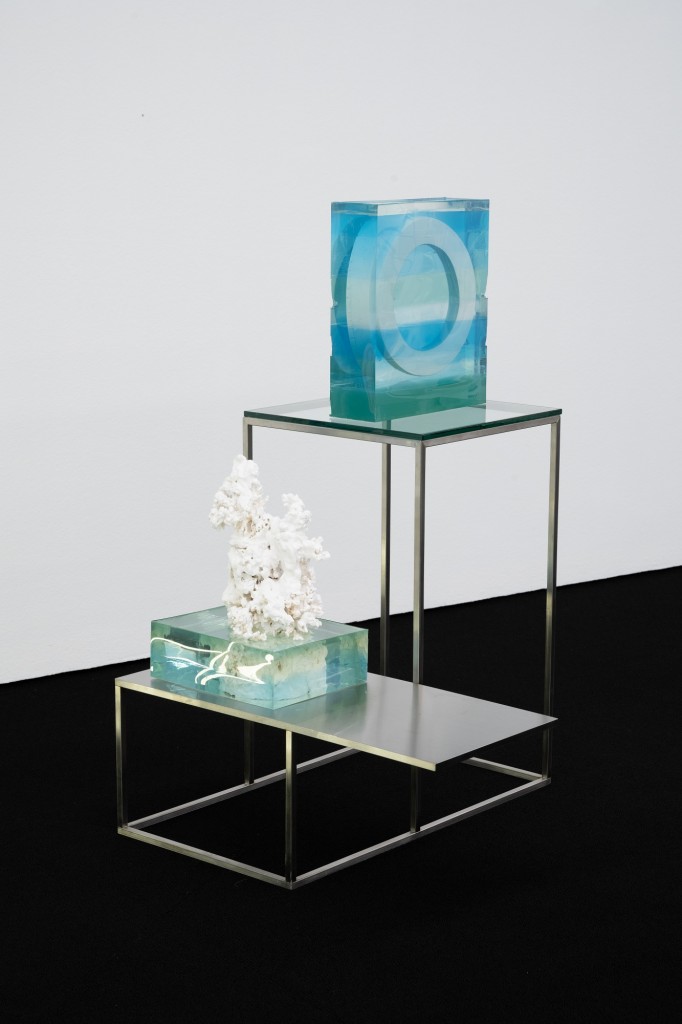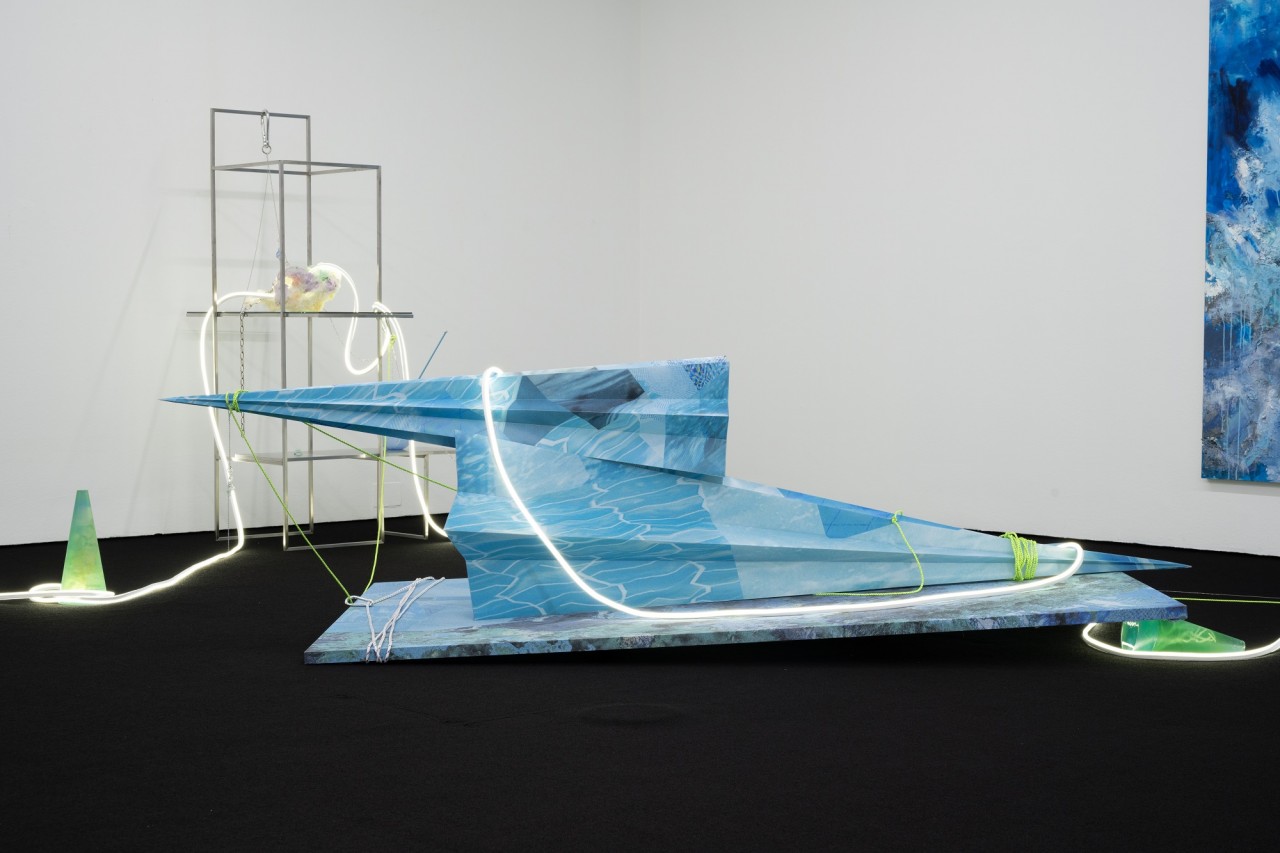Exhibitions

PERIGEE UNFOLD 2022
inter-face
2022.08.05. FRI ~
2022.08.27. SAT
<inter-face>
김명진 (페리지갤러리 큐레이터)
《inter-face》는 자신만의 시각언어를 만들어가는 과정에서 매체의 존재를 의미 있게 느끼는 젊은 미술가들이 서로를 마주 보는 이야기다. 작가가 창작의 매개체를 선택한다는 것은 자신의 ‘인터페이스’를 설정하는 일과 비슷하다고 할 수 있다. 이때 인터페이스는 소프트웨어의 접근 편의성과 관련된 사용자 인터페이스(user interface, UI)를 의미하지 않으며, 우리와 실재 사이를 매개하여 세계를 감각하고 표현할 수 있게 하는 장치이자 틀을 포괄적으로 일컫는다. 이를 미술의 영역에 국한한다면 미술의 매체(medium)가 될 것이며, 본 전시는 이에 더하여 우리가 주변 세계를 감각하는 기반이자 조건인 오늘의 미디어(media) 환경에 관한 이야기를 함께 다루고자 한다.
어떠한 매체를 선택하고 본인만의 매개 방식을 만들어가는 일련의 과정은 그 자체로 창조성의 주요한 요인이 되며 각자의 차이를 만들어낸다. 만일 모두가 같은 인터페이스를 사용하여 결과물을 도출해낸다면 미술 현장은 천편일률적인 시각성으로 뒤덮이게 될 것이다. 이는 우리가 가상공간과 3D 그래픽을 기반으로 한 이미지로서의 전시장을 지루해하는 이유이기도 하다. 그보다는 가상의 경험이 번역되어 물질의 세계로 옮겨오는 다양한 양상을 지켜볼 수 있을 때 오늘의 미술은 비로소 흥미로워진다.
본 전시에 참여하는 작가들은 단일 매체를 탐구하거나(홍기....
inter-face
Myung Jin Kim (Curator of Perigee Gallery)
inter-face touches on a narrative in which young artists consider the presence of medium significant in the process of building their own visual language. It can be said when an artist chooses a medium for their creation, they are choosing an interface. The interface here does not mean a user interface (UI) associated with access to software, but refers comprehensively to a means or frame that enables a user to sense and express the world, forming the bridge between the user and reality. In addition to this, this exhibition is to address together something related to the media environment which is the base and condition to sense our surrounding world.
A process in which one selects a medium and creates their own way of mediation is a primary cause of creativity, engendering each difference. If we all produce results using the same interface, the art scene will be covered with monotonous, humdrum visibility. This is also why we are bored of 3D graphic images in virtual space. Art today gets more interesting only when we can watch a diversity of aspects in whi....
김명진 (페리지갤러리 큐레이터)
《inter-face》는 자신만의 시각언어를 만들어가는 과정에서 매체의 존재를 의미 있게 느끼는 젊은 미술가들이 서로를 마주 보는 이야기다. 작가가 창작의 매개체를 선택한다는 것은 자신의 ‘인터페이스’를 설정하는 일과 비슷하다고 할 수 있다. 이때 인터페이스는 소프트웨어의 접근 편의성과 관련된 사용자 인터페이스(user interface, UI)를 의미하지 않으며, 우리와 실재 사이를 매개하여 세계를 감각하고 표현할 수 있게 하는 장치이자 틀을 포괄적으로 일컫는다. 이를 미술의 영역에 국한한다면 미술의 매체(medium)가 될 것이며, 본 전시는 이에 더하여 우리가 주변 세계를 감각하는 기반이자 조건인 오늘의 미디어(media) 환경에 관한 이야기를 함께 다루고자 한다.
어떠한 매체를 선택하고 본인만의 매개 방식을 만들어가는 일련의 과정은 그 자체로 창조성의 주요한 요인이 되며 각자의 차이를 만들어낸다. 만일 모두가 같은 인터페이스를 사용하여 결과물을 도출해낸다면 미술 현장은 천편일률적인 시각성으로 뒤덮이게 될 것이다. 이는 우리가 가상공간과 3D 그래픽을 기반으로 한 이미지로서의 전시장을 지루해하는 이유이기도 하다. 그보다는 가상의 경험이 번역되어 물질의 세계로 옮겨오는 다양한 양상을 지켜볼 수 있을 때 오늘의 미술은 비로소 흥미로워진다.
본 전시에 참여하는 작가들은 단일 매체를 탐구하거나(홍기하), 복잡다단한 과정을 거쳐 하나의 매체로 귀결되는 결과물을 만들어내거나(정영호), 매체와 매체 사이를 횡단하며 자신의 언어를 찾아나간다(허연화). 각자는 자신의 인터페이스가 처한 가능성과 한계를 동시에 마주한다. 작가에게 매체의 한계는 극복하고 돌파해야 할 대상이지만 때로는 그 한계를 직면하고 유의미한 제한을 발견함으로써 자신을 정의할 수 있는 가능성 또한 보게 된다.
홍기하에게 조각은 작업의 매개체일 뿐 아니라 그 자체로 오랜 탐구의 대상이자 주제가 된다. 그는 오늘날 크고 무거운 조각을 제작하고 전시하는 일을 일종의 저항이라고 본다. 동시대성이 주로 데이터를 닮은 평면성이나 가상성으로 설명되는 가운데, 조각은 그 반대항인 물질성과 실재하는 공간에 기반하고 있기 때문이다. 많은 동시대 조각들의 전략은 가벼운 물성을 사용하거나 매력적인 표면을 통하여 카메라와 SNS에 친화적인 이미지가 되는 것이다. 이러한 전략의 반대 방향에서 주로 석고와 돌을 조각하는 홍기하는 전통적인 조각의 비효율적인 재료와 무게, 제작 방식을 어느정도 고집하며 그 안에서 동시대적 가능성을 찾아나간다. 이번에 전시된 그의 작업들은 모두 석고 조각이며 복제 가능한 에디션이 아니라 직조 방식을 사용한 각기 유일한 작품들이다. 일부는 기성품 도구인 알루미늄 이젤과 사다리를 조각의 ‘뼈대’로 사용하여 조형적 실험을 전개하고 있다. 홍기하는 매스와 볼륨이 있는 자신의 조각이 사진에 찍히고 온라인상의 이미지가 되는 상황을 경계한다. 그의 조각에는 ‘정면’이 없다. 즉 실제로 360︒의 관람이 가능한 ‘지금, 여기’의 시공간 안에서 비로소 제대로 된 감상이 이루어질 수 있다. 이는 작가의 물리적 노동이 많이 개입된 조각을 감상하는 것 또한 신체적인 노력이 필요한 활동임을 뜻한다. 이러한 몸짓은 시대착오를 기꺼이 감수하는 것처럼 보이지만 실은 치열한 시대정신에 기반하고 있다고 할 수 있다. 여기에는 가상공간이 존재하기에 오히려 더 깊게 전개되는 물질과 실존에 관한 고민이 담겨 있기 때문이다.
정영호는 사진이라는 장치를 통해 자신을 둘러싼 미디어 환경을 첨예하게 감각하고자 한다. 작가는 스크린의 RGB 픽셀이나 3D 프린트된 개체의 질감 등을 전면에 드러내며 기술이 일상에 매끄럽게 자리 잡은 세계에서 장치의 존재를 잊지 않고 감지하려는 작업을 해 왔다. 그의 최근 작업에서 최초의 원료는 인터넷이라는 공론장에서 충돌하는 단어들이다. 먼저 익명과 가상의 공론장에서 활발하게 오가는 정치적이고 예민한 주제어들을 탐색하고 특정 키워드의 데이터 추이를 살핀다. 그리고 데이터의 흐름을 형태화하는 과정을 거친다. 키워드 언급량 빅데이터가 만들어내는 패턴을 그래픽으로 모델링하여 3D 프린팅 조형물로 만들고 이를 다시 사진으로 촬영한다. 정영호의 사진은 컴퓨터 그래픽을 닮아 있지만 결과적으로는 현실 공간에서 조명을 활용하여 실제 조형물을 촬영한 것이다. 이번에 전시된 작업들은 3D 조형물의 일부분만을 보여주는 클로즈업 촬영을 통해 표면의 물질성에 더욱 집중하고 있다. 이는 그래픽으로 완성될 수도 있었던 것을 다시 사진 작업으로 치환하면서 작가 자신과 뗄 수 없는 매체가 된 사진의 한계와 가능성을 동시에 드러내는 움직임으로 읽히기도 한다. 한 장의 사진에서 일련의 복잡한 작업 과정은 납작하게 압축되어 있으며, 표면에 드러나는 데이터의 파편들은 명확한 정보로 습득되기 어렵다. 정영호가 취하고 있는 불명확성의 전략은 물질세계에 발을 딛고 데이터 세계를 바라보는 상황을 의식한 결과로써 간접적 경험의 불투명성을 드러낸다.
허연화는 다매체 설치를 통해 공간 안에 풍경을 그려내는 작업을 전개한다. 특히 규모가 아주 크거나 다양한 층위에 있는 시공간을 압축하여 보여주는 일에 관심을 두어 왔다. 즉 무한한 공간(개념)을 유한한 인터페이스 내에 담는 방법을 찾아가면서 평면과 입체, 데이터와 물질 사이를 횡단하고 있다. 이는 작가가 조각을 처음 시작하면서 체감했던 물리적인 공간의 유한함을 가상공간의 무한한 속성과 접합시키면서 나타난 작업 방식이다. 그는 3D Max 프로그램에서 경계와 구획 없이 구성될 수 있는 데이터-공간의 속성에 주목했고, 이를 현실 공간에서의 작업 방식에 적용하고자 했다. 서로 다른 복수의 공간 이미지들이 담긴 다면체나 주름진 평면은 이러한 사례들이다. 조각에서 출발했지만 데이터 세계를 경유하면서 인쇄된 평면의 전개도를 활용한 조각을 만들게 되었고 판화, 회화에 이르는 평면 작업을 아우르게 된 것이다.
또한 허연화는 현실 공간에서 경계 없이 흐르는 물질인 물에 주목하여 투명하거나 흘러내리는 물성을 탐구하고 있다. 흐르는 물은 작가가 오랫동안 중요하게 여겨온 ‘연결’의 감각과도 관련되며, 이번 전시 작품들을 구성하는 제목인 <벼락 맞은 날>에 등장하는 벼락 또한 연결의 비유로 이해할 수 있다. <벼락 맞은 날>은 번개와 나뭇가지와 모세혈관의 뻗어나가는 형태가 닮았음을 새삼스레 지각하면서 모든 것이 연결되어 있다는 감각을 느끼게 된 어떤 날의 기억 에서 출발한다. 이는 작가가 각각 다른 시기에 제작한 투명한 오브제와 산호를 그린 그림, 뿔 조각 등을 하나의 공간 안에서 구성하는 시도로 이어진다. 이러한 다매체 설치 작업에서 작가가 단지 경계 없음에 대해 말하고자 하는 것은 아니다. 벼락이라는 테마에서도 감지할 수 있듯이, 오히려 다른 시공간에서 양립할 수 없다고 여겨졌던 것들을 연결하면서 발생하는 낙차와 생경한 감각이 전면에 드러나게 된다.
이렇듯 각기 다른 인터페이스로 세상을 감각하는 세 작가는 전시를 매개로 한 자리에서 서로 마주 보게 된다. 이들의 작업에서 매체와 창작의 상관관계는 각기 다른 재료로 만들어진 표면들의 차이로만 설명되지 않는다. 더 주목해 볼 만한 것은 디지털과 물질세계가 공존하며 영향을 주고받는 지금의 미디어 환경에 반응하는 각자의 방식들이다. 구체적인 물성은 다르지만 세 작가 모두에게 중요한 것은 (가상성보다는) 물질성이다. 무거운 재료를 대상으로 한 신체적 노동을 저항의 정신적 가치로 강조하거나, 디지털 장치에서 물질성을 발견하거나, 데이터의 속성을 닮은 가변적인 물질들의 연결을 관찰하는 각각의 방식에서, 여전히 미술의 기반을 이루는 ‘물질’에 대한 감각을 갱신하려는 과정들을 엿볼 수 있다.
Myung Jin Kim (Curator of Perigee Gallery)
inter-face touches on a narrative in which young artists consider the presence of medium significant in the process of building their own visual language. It can be said when an artist chooses a medium for their creation, they are choosing an interface. The interface here does not mean a user interface (UI) associated with access to software, but refers comprehensively to a means or frame that enables a user to sense and express the world, forming the bridge between the user and reality. In addition to this, this exhibition is to address together something related to the media environment which is the base and condition to sense our surrounding world.
A process in which one selects a medium and creates their own way of mediation is a primary cause of creativity, engendering each difference. If we all produce results using the same interface, the art scene will be covered with monotonous, humdrum visibility. This is also why we are bored of 3D graphic images in virtual space. Art today gets more interesting only when we can watch a diversity of aspects in which a virtual experience is interpreted and transferred to the material world.
Participants in this exhibition explore a single medium (Khia Hong), produce results that are concluded in one medium after going through a complex procedure (Youngho Jeong), or are in search of one’s own language, cutting across media (Yeonhwa Hur). Each artist explores both the possibilities and limitations of their interface. To an artist, a medium’s limitations are something to overcome, but they are able to find some possibility to define themselves by facing this limit and discovering its useful meaning.
To Khia Hong, sculpture is a medium for her work and this itself is the object and subject of her long exploration. She considers practicing and displaying large-scale and heavy sculptures as an act of defiance. This is because her sculptures are based on materiality and the physical space, while “contemporaneity” is often explained through characteristics of digital data such as flatness and virtuality. The strategy many contemporary sculptors rest on is to adopt a lightweight materiality or create photogenic or social-media-friendly pieces through their appealing surfaces. Hong, who primarily uses gypsum and stone stands at the polar opposite of this strategy. To a certain degree she persists in the inefficient nature of the process of sculptural practice, while seeking new potential in contemporary sculpture. All of her works in this exhibition have been practiced in gypsum, using them directly to sculpt and carve instead of pouring the mix into molds. Aluminum easels and ladders are used as the armature for some of the pieces. Hong holds a skeptical view of the situations in which her sculptures with mass and volume become flimsy online images. None of her sculptures are marked by “frontality.” That is to say, her works can be appreciated in the space-time of “here and now” from all of the 360 degrees of directions. This means the appreciation of a sculptural piece involving the artist’s physical labor is also an activity demanding physical effort. Her endeavors seem readily anachronic, but in effect, her works are thoroughly anchored in the zeitgeist. This is because this holds the artist’s profound concerns about material and existence that is amplified in contrast to the ever-growing presence of virtual space.
Youngho Jeong acutely senses the media environment surrounding him through photography. He has worked on detecting the existence of a device in the world where technology is ubiquitous in everyday life, revealing each work’s RGB pixels and 3D printed surface texture. The raw materials for his recent pieces are words colliding with one another in the public sphere of the Internet. First of all, he explores controversially political keywords vigorously exchanged in the public sphere of anonymity and virtuality. And then, his work goes through a course of shaping the flow of data. The pattern generated by the number of references to keywords is modeled in graphics, made into 3D printed sculptures, and is again photographed. His photographs look like computer graphics, but they are shots of real sculptures in real space. His works on display at this exhibition focus more on the physical properties of the surface through close-up pictures showing parts of a three-dimensional work. This practice is thought of as an endeavor to unmask the limits and possibilities of photography, the medium that is inextricably bound up with the artist while replacing graphic images with photographic works. A complex process involved in one picture is condensed flatly while it is hard to gain data fragments on the surface as clear information. An uncertain strategy Jeong adopts discloses the opaqueness of indirect experiences as a result of looking at the world through data.
Yeonhwa Hur has developed her method of portraying a scene in space through multimedia installation. She has paid particular attention to displaying space-time in layers by condensing it. She also goes across the boundaries between plane and solid, and data and matter. This is the facture that emerged as finiteness in physical space is fused with infinity in virtual space, which she realized when she began doing sculpture. Hur took notice of the properties of data-space composed with 3D Studio Max, trying to apply this to the facture in real space. Its examples are found in polyhedrons holding different plural spatial images or pleated planes. Starting from sculpture, she produced sculptural pieces by tapping planar figures after going through the world of data, and encompassed two-dimensional works such as prints and paintings.
Hur also quests for transparent, fluid physical properties, taking note of water flowing without borders in real space. This flowing water is associated with the sensation of ‘connection’ she has long considered significant. Lightning in exhibited works titled A Day When I Was Struck by Lightning is also seen as a metaphor for connection. This work was initiated by her memory of a day when she had the sensation that everything is connected, perceiving that lightning bears a resemblance with a spread of twigs or capillary vessels. This continued in paintings of transparent objects and corals she produced in different periods and horned sculptures together in one scene. Borderlessness is not merely what she intends to touch on in this multimedia installation. The difference and strange feelings brought about by connecting what are deemed incompatible are rather revealed in this work, as sensed in the theme of lightning.
The three artists sensing the world respectively through different interfaces come together in the place mediated by the exhibition. The correlation of a medium with creation in their work is not described with only the difference of surfaces brought forth by different materials. More noteworthy are the respective ways that they react to the present media environment in which the digital and the material world coexist and influence one another. What matters the most for all these artists is materiality (rather than virtuality) despite their works’ different physical properties. We can get a glance at their endeavors to renew their sense of matter which is still the base of art in respective ways: thinking emphatically of physical labor to address heavy materials as the spiritual value of resistance; discovering materiality in a digital device; or observing a connection between variable materials that have the properties of data.



